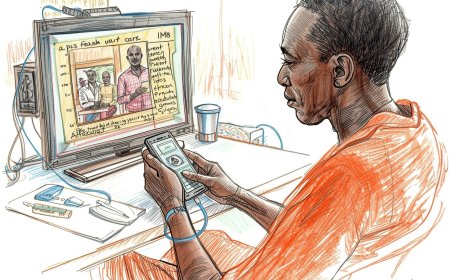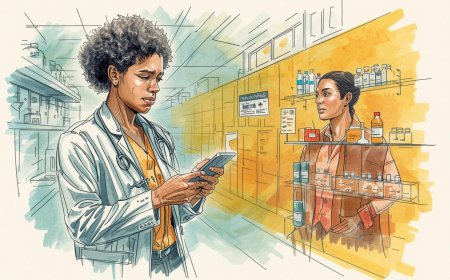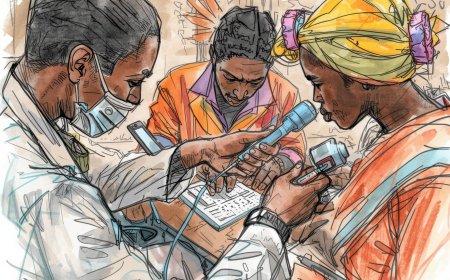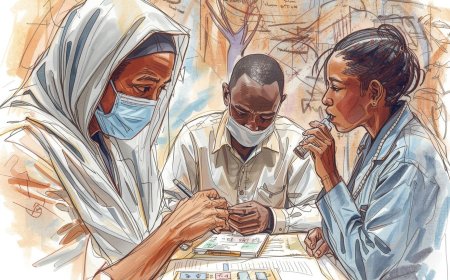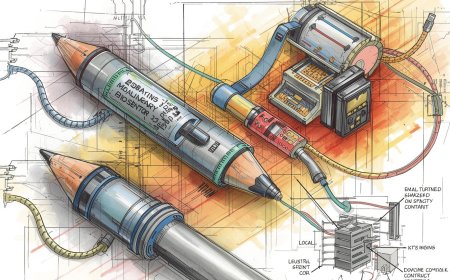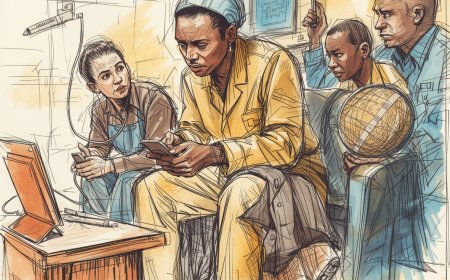Reducing No-Shows: Best Practices for Telehealth Appointment Adherence
Practical, Africa-focused playbook for cutting telehealth no-shows: evidence-based tactics (SMS/IVR reminders, two-way confirmations, predictive targeting), platform features to demand, CHW & low-bandwidth workarounds, scheduling strategies, sample SMS scripts, and a clinic-ready checklist. APA citations with live links included.

Short brief: missed appointments (no-shows) are expensive, they delay care, and in Africa they’re often caused by perfectly avoidable things — “phone dead,” no airtime, transporter strike, or a confusing login link. This practical guide explains what teleconsultation platforms and clinics can do right now to cut no-shows dramatically, with research-backed tactics, Africa-relevant workarounds, and copy-paste SMS templates you can use today. Expect a cheeky clinic anecdote, vendor feature calls you should demand, and a one-page operational checklist.
Why no-shows matter (and why telehealth is both a risk and an solution)
No-shows wreak operational havoc: wasted clinician time, income loss, and delays in care for other patients. A global review shows average outpatient no-show rates near 23% — and significantly higher in some African settings (reported up to ~43% in some analyses). Telehealth can reduce missed visits (several studies report lower no-show rates for teleconsultations vs in-person), but only if the system addresses the concrete barriers patients face (connectivity, phone access, language, cost, forgetfulness). ScienceDirect+1
The common causes of telehealth no-shows in African settings
-
Forgotten appointment or unclear time/date (no calendar integration).
-
Phone dead / no airtime / no data.
-
Confusing joining steps (app download, login, PIN).
-
Clinic hours clash with work or caregiving.
-
Stigma or privacy concerns (e.g., mental health).
-
Language barriers.
-
Last-minute transport or power outages blocking clinic hub devices.
Tackle the root causes — not just symptoms — and you’ll move the needle.
Evidence-backed tactics that actually reduce missed telehealth visits
1) Multi-channel reminders: SMS + IVR + phone calls (start simple)
Randomized trials and meta-analyses show SMS reminders substantially increase clinic attendance; multiple reminders (7-day, 48-hour, day-of) work better than one. IVR or voice reminders improve reach for low-literacy or non-smartphone users. When reminders fail, escalation to a human call helps. PMC+1
Practical: send three reminders (7 days, 2 days, same day). If no confirmation by the 2-day mark, route an SMS-to-call flag to a CHW for phone follow-up.
2) Two-way confirmation & easy rescheduling (lower friction = fewer no-shows)
Two-way SMS/USSD lets patients confirm or reschedule with a single reply; confirmed appointments are far more likely to occur. Systems that allow one-tap rescheduling avoid last-minute no-shows and improve patient satisfaction. Evidence suggests interactive reminders + human follow-up outperform one-way pushes. PMC+1
3) Low-bandwidth, one-click joining (make the session easy to enter)
Require no app, no login where possible: a browser link, callback option, or a local short code/USSD entry beats a multi-step app install (especially for older phones or limited data). Platforms that provide phone-call fallback (provider calls patient) and “call me” features reduce technical dropouts. VSee and Doxy.me, for example, emphasize low-bandwidth or no-download options — features to prioritize. vsee.com+1
4) Pre-visit tech checks & short how-to prompts (reduce last-minute friction)
Send a short SMS with the join link plus a 1-minute IVR “press 1 to test your connection” or a one-page pictorial guide. Clinics that run a quick pre-visit tech check (automated or by staff) have fewer missed calls due to tech errors. WHO recommends planning for user support and tech checks in telemedicine services. World Health Organization
5) Predictive risk-targeting (use data to find high-risk no-shows)
Machine-learning or simple rule-based models using history (past no-shows), distance, appointment lead time, and socio-demographics can flag high-risk patients for intensified outreach (phone call, CHW home visit, airtime top-up). Studies show predictive plus targeted outreach is more efficient than blanket calling. PMC
6) Flexible scheduling & same-day / walk-in tele slots
Offer same-day tele slots or “on-demand” callbacks; patients who can’t make a scheduled time will accept a same-day offer. Also offer evening or early-morning slots to accommodate shift workers.
7) Incentives & small commitments (use ethically)
Micro-incentives like small airtime top-ups for first televisit or conditional reminders have improved attendance in pilots — but plan sustainability and equity first. Avoid coercive penalties; favour positive nudges. (Evidence on incentives is mixed; design carefully.) BioMed Central
8) CHW / facility hub backups for low-tech patients
For patients without phones or data, schedule teleconsults at a local CHW hub or clinic kiosk where staff can assist with the call. This hybrid model preserves access while keeping telehealth efficient.
Teleconsultation platform features you must demand
When evaluating platforms (Doxy.me, VSee, HeliumDoc, Vezeeta and others), prioritise features that directly reduce no-shows:
-
Automated multi-channel reminders (SMS, IVR, email). Doxy.me+1
-
Two-way confirmation & rescheduling buttons (one-tap confirm/cancel). PMC
-
One-click join (browser) + call-in number for low bandwidth / feature phones. vsee.com+1
-
Delivery reports & analytics (who received message, who clicked link). Doxy.me
-
Patient segmentation & targeted outreach tools (build lists of high-risk no-shows). PMC
-
Localisation (language support, SMS templates, time-zone settings). World Health Organization
-
Integration with scheduling/EMR so reschedules update calendar and free slots are reused. Helium Health
Platform examples: Doxy.me — browser-first telehealth with simple workflows; VSee — low-bandwidth, device-friendly telemedicine; HeliumDoc — African provider marketplace and teleconsultation features; Vezeeta — booking + telehealth in North Africa & MENA. Inspect each for reminder and fallback capabilities. Vezeeta+3Doxy.me+3vsee.com+3
Implementation recipe (a 6-week clinic playbook)
Week 0 — Baseline & targets
-
Measure current no-show rate and set target (e.g., reduce no-shows by 40% in 3 months). Identify high-volume clinics/priorities.
Week 1 — Workflow & tech
-
Choose platform that supports multi-channel reminders & one-click joins. Draft reminder schedule (7d, 48h, day-of). Set auto-reschedule flow.
Week 2 — Message design & localisation
-
Create SMS/IVR scripts in local languages. Pretest messages with 10–15 patients.
Week 3 — Predictive flagging & CHW plan
-
Build simple rules (prior no-show, long lead time, no phone data) to flag patients for phone calls or CHW pickup.
Week 4 — Train staff & run tech checks
-
Train reception, CHWs, and clinicians. Start pre-visit tech checks for first 100 appointments.
Week 5 — Soft launch
-
Run pilot on 200 teleconsults. Track delivery rates, confirmations, and reasons for no-shows.
Week 6 — Iterate & scale
-
Tweak timing, message words, escalation windows. Expand to other departments.
Sample SMS / IVR scripts (copy-paste, localise and translate)
7-day reminder (SMS):
“Hello [Name], your teleconsult with Dr [X] is on [date] at [time]. Reply 1 to confirm, 2 to reschedule, or 3 for help. If you need someone to call you, reply 4. — [Clinic name]”
48-hour interactive (SMS):
“Reminder: your televisit is in 2 days. Reply 1 = I’ll attend, 2 = Please call me to reschedule, 3 = I need translation.”
Same-day IVR (voice):
“Hello [Name]. This is [Clinic]. You have a teleconsult with Dr [X] today at [time]. Press 1 to confirm, 2 to speak to a staff member, 3 to receive the join link by SMS.”
Missed appointment follow-up (SMS):
“We missed you today at your teleconsult. Reply 1 to reschedule within 24 hours at no extra charge, or 2 for a callback.”
Note: Keep messages short (<160 chars for SMS), use plain language and one action per message.
Scheduling strategies & clinic policies that reduce wasted time
-
Active waitlist + quick fill: When a patient cancels, the system texts the first person on the waitlist with a 15-minute hold window. This reuses openings and shortens clinician idle time.
-
Overbooking rules: Use conservative overbooking based on historic no-show patterns and clinic capacity — but do not exceed safe limits. Track the impact on clinician overtime and patient satisfaction.
-
Shorter, focused slots for telehealth: Teleconsults often succeed with slightly shorter slots (e.g., 10–15 minutes) and strict timekeeping. Offer an extended follow-up if necessary.
-
Penalty & refund policies: If you consider charging for no-shows, check local regulations and ethics; positive incentives (reminder credit, free reschedule) are safer and more acceptable.
Monitoring metrics — what to measure weekly/monthly
-
Delivery & reach: % SMS delivered; IVR answer rate.
-
Confirmation rate: % who reply “confirm.”
-
No-show rate (tele): missed / scheduled without prior cancel.
-
Reasons for no-show: logged by staff post-miss (phone dead, forgot, tech failure).
-
Time-to-rebook: median days until rebook.
-
Operational impact: clinician idle time, revenue loss estimate.
Use dashboards that tie message delivery to calendar events so you can measure the effect of each intervention.
Realistic African vignette (what success looks like)
A peri-urban clinic in Kenya switched to a teleconsultation workflow with a platform that provided SMS + IVR reminders and a one-click browser join link. They added a CHW phone-check for patients flagged as high risk (no phone, prior no-show). Over a 3-month pilot they saw confirmations increase and clinician idle time fall; the clinic used the saved time to offer an extra afternoon teleclinic for shift workers. (This pattern — multi-channel reminders + human follow-up — mirrors interventions shown effective in the literature.) PMC+1
Common pitfalls — and how to avoid them
-
Pitfall: Relying on SMS only (many patients prefer voice / IVR or have low literacy). → Fix: provide IVR and phone-call escalation. PMC
-
Pitfall: Complex join steps (app downloads) — patients drop out at connect time. → Fix: browser links, call-in numbers and “call me” options. Doxy.me+1
-
Pitfall: No tracking of reasons for no-shows. → Fix: make reason capture mandatory for every missed slot and triage patterns monthly.
-
Pitfall: Ignoring local language/cultural needs. → Fix: translate reminders, use local idioms, and test messages with patients.
One-page operational checklist (pin this to reception)
-
Platform supports SMS + IVR + one-click browser join. Doxy.me+1
-
Reminder schedule configured (7d / 48h / day-of). PMC
-
Two-way confirmation & one-tap reschedule active. PMC
-
Pre-visit tech-check workflow defined (auto or CHW). World Health Organization
-
High-risk no-show flags & CHW escalation rules set. PMC
-
Local language messages tested with users.
-
Analytics dashboard shows delivery → confirmation → attendance funnel.
-
Waitlist & quick-fill protocol active.
-
Patient consent & privacy notice logged (SMS privacy and call recording rules). World Health Organization
Quick resources & platforms (live links)
-
WHO — Consolidated Telemedicine Implementation Guide. https://www.who.int/publications/i/item/9789240059184. World Health Organization
-
SMS reminder meta-analysis (Guy et al.). https://www.ncbi.nlm.nih.gov/pmc/articles/PMC3419880/. PMC
-
Predictive model + targeted outreach review. https://www.ncbi.nlm.nih.gov/pmc/articles/PMC9933067/. PMC
-
Doxy.me (browser-first telehealth). https://doxy.me/. Doxy.me
-
VSee (low-bandwidth telemedicine). https://vsee.com/. vsee.com
-
HeliumDoc / Helium Health (Africa-focused teleconsultation). https://heliumhealth.com/helium-doc/. Helium Health
-
Vezeeta (booking + telehealth in North Africa / MENA). https://www.vezeeta.com/en. Vezeeta
Final note — start human, scale technical
Technology helps—but human touch saves visits. The highest-impact telehealth adherence programs pair automated reminders with targeted human follow-up (CHWs, call agents) and ultra-simple joining flows. Start with the low-hanging fruit (SMS + one-click joins + CHW backup), measure obsessively, then add predictive targeting and advanced automation.
References (APA — live links)
World Health Organization. (2022). Consolidated telemedicine implementation guide. https://www.who.int/publications/i/item/9789240059184. World Health Organization
Guy, R. (2012). How effective are short message service reminders at increasing clinic attendance? A meta-analysis and systematic review. Journal/Article. https://www.ncbi.nlm.nih.gov/pmc/articles/PMC3419880/. PMC
Oikonomidi, T., et al. (2022). Predictive model-based interventions to reduce outpatient missed appointments. https://www.ncbi.nlm.nih.gov/pmc/articles/PMC9933067/. PMC
Hasvold, P. E., & Wootton, R. (2011). Use of telephone and SMS reminders to improve attendance at outpatient clinics. https://www.ncbi.nlm.nih.gov/pmc/articles/PMC3188816/. PMC
Dantas, L. F., et al. (2018). No-shows in appointment scheduling – a systematic review. https://www.sciencedirect.com/science/article/abs/pii/S0168851018300459. ScienceDirect
Cummins, M. R., et al. (2024). Telemedicine appointments are more likely to be ... https://www.ncbi.nlm.nih.gov/pmc/articles/PMC11245742/. PMC
Doxy.me. (n.d.). Simple, secure telehealth for everyone. https://doxy.me/. Doxy.me
VSee. (n.d.). Low bandwidth telemedicine solutions. https://vsee.com/. vsee.com
Helium Health. (n.d.). HeliumDoc — telehealth in Africa. https://heliumhealth.com/helium-doc/. Helium Health
Vezeeta. (n.d.). Book doctors & telehealth. https://www.vezeeta.com/en. Vezeeta
What's Your Reaction?
 Like
0
Like
0
 Dislike
0
Dislike
0
 Love
0
Love
0
 Funny
0
Funny
0
 Angry
0
Angry
0
 Sad
0
Sad
0
 Wow
0
Wow
0

















